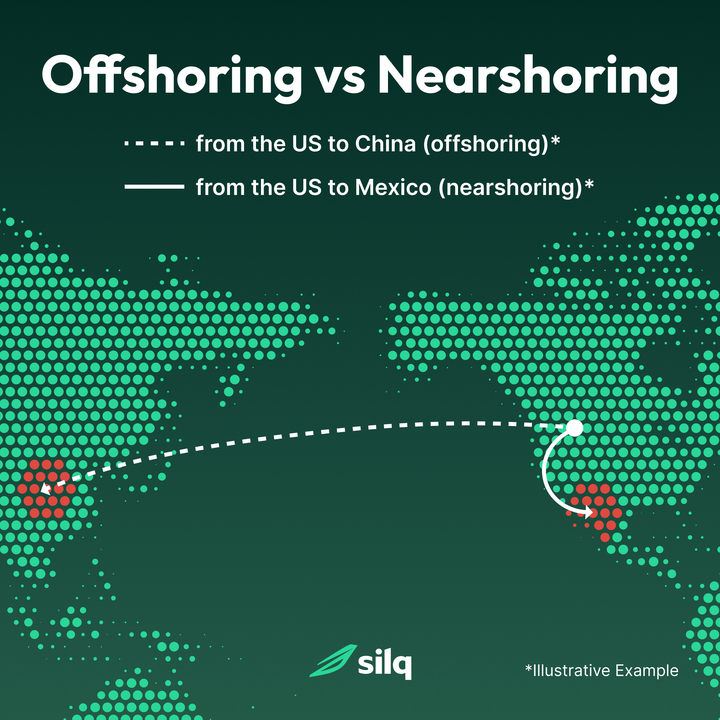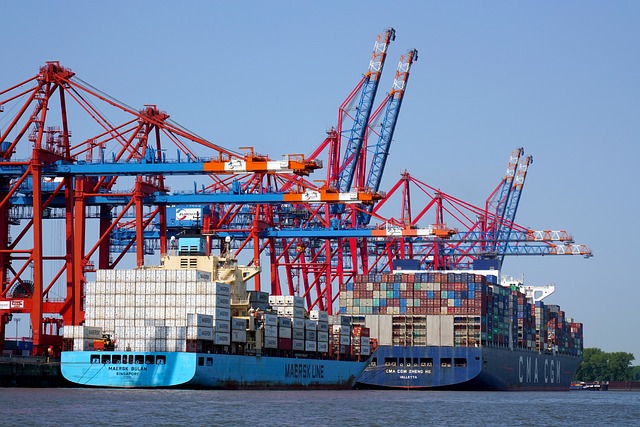Nearshoring Best Practices in the Post-pandemic World

Introduction
In the wake of the logistical challenges and supply chain constraints experienced during the COVID-19 pandemic, many U.S. shippers traditionally sourcing from China are reevaluating their strategies. Nearshoring, the practice of transferring business operations to nearby countries, has emerged as a compelling solution to enhance supply chain resiliency and reduce transit times.
However, successful nearshoring requires a well-thought-out approach and careful planning. In this blog post, we will delve into the best practices for nearshoring, from defining clear objectives to implementing robust quality control measures and risk management strategies. Each section will provide actionable insights to guide shippers toward a successful transition to nearshoring.
Whether you're at the start of your nearshoring journey or looking to refine your existing strategy, this comprehensive guide is designed to steer you through each crucial step. Let's begin our journey to a more resilient and efficient supply chain.
Define Clear Objectives and Expectations
When initiating a nearshoring process, the first and one of the most crucial steps is to define clear objectives and expectations. This foundation sets the tone for the entire operation and ensures all parties have a common understanding of what the collaboration should achieve. Here are some key points to consider:
- Business Objectives: Identify your goals, such as cost reduction, increased speed, improved quality, or diversified supply chains, and align these with your nearshoring strategy, choosing locations that support these objectives.
- Scope of Work: Detail which operations will be nearshored to help suppliers grasp the project's complexity and provide accurate bids and timelines.
- Performance Metrics: Establish KPIs like delivery times, defect rates, cost savings, or customer satisfaction scores to measure success, ensuring they correspond with your business objectives.
Conduct Thorough Market Research
Before diving into a nearshoring strategy, it's crucial to understand the market landscape. Examine economic stability, political climate, infrastructure, labor costs, and local regulations of the potential countries. Remember, what worked in China may not necessarily work in a nearshore location.
When considering nearshoring, evaluating the economic and political stability of potential countries is crucial. Examine economic conditions such as GDP growth, unemployment rates, inflation, and foreign exchange rates as indicators of a stable business environment. Likewise, assess the political climate, including the country's trade policies, labor laws, and environmental regulations, as well as its participation in beneficial trade agreements.
Additionally, comprehending labor market conditions, including labor costs, workforce skill level, and the presence and strength of labor unions, can significantly affect your operational costs and productivity. Lastly, a thorough analysis of the local industry is vital. The presence of other companies in your industry can signal a developed supply chain and skilled workforce but could also mean increased competition for resources.
Assess Supplier Capabilities
Not all suppliers are created equal. Evaluate potential suppliers based on their ability to meet your specific needs, including their production capacity, technological sophistication, and experience with similar projects. Site visits, either virtual or physical, can provide valuable insights. Remember, one of the key advantages of nearshoring is the ability to conduct more in-person visits and inspections. Not only does this improve quality control, but it can also help improve supplier relationships.
Establish Effective Communication Channels
Successful nearshoring depends on seamless communication. Given potential differences in time zones and languages, it’s crucial to establish reliable, open channels for communication. The use of digital tools can significantly ease this process.
Develop a Strong Contractual Framework
A robust contract protects both parties. It should clearly outline terms and conditions, including pricing, delivery, responsibilities, and dispute resolution mechanisms. Consider seeking legal counsel to ensure your contract aligns with local laws and international trade agreements.
Implement Robust Quality Control Measures
Maintaining high product quality is essential. Establish strict quality control protocols and ensure your nearshore partner has the capabilities to comply with them. Regular inspections and audits can help identify issues early and prevent larger problems down the line.
Here again, the capability to conduct onsight inspections is invaluable in terms of quality control and managing shipping operations. Delivering is vital to building trust with customers and helps to establish a strong brand name.
Invest in Cultural Understanding
Cultural understanding is integral to manufacturing as a whole and benefits nearshoring and international business endeavors as it fosters clear and effective communication and helps prevent misunderstandings that may arise due to cultural nuances. Respecting and acknowledging your partners' culture not only strengthens and deepens business relationships but also helps avoid inadvertently causing offense by adhering to cultural norms. Furthermore, being aware of these norms and the different business practices in various cultures, from negotiation styles to decision-making processes, equips you with a competitive edge.
Prioritize Intellectual Property Protection
Intellectual property (IP) protection can be a challenge when nearshoring. It's crucial to understand the local laws related to IP and ensure that your contract includes clear provisions for IP rights. This will help to safeguard your business against potential infringements.
Establish Risk Management Strategies
Nearshoring, like any business decision, carries risks. Develop a comprehensive risk management strategy that identifies potential risks, such as political instability or natural disasters, and outlines mitigation measures. This will help you navigate uncertainties and ensure business continuity.
Continuously Evaluate and Improve
Finally, remember that nearshoring is a dynamic process. Regularly review your nearshoring operations and make adjustments as needed. Continual improvement will help you stay competitive and ensure your nearshoring strategy delivers the expected benefits.
The COVID-19 pandemic has indeed changed the landscape of global trade and shipping. As we navigate this new landscape, nearshoring offers U.S. shippers an opportunity to reduce costs, improve reliability, and stay resilient in the face of future disruptions. Following these best practices can help ensure a successful transition to nearshoring.
Contact Silq today to help your brand build a comprehensive supply chain and logistics solutions to help you be more efficient and successful.
Ready for Supply Chain Predictability?
Importers using Silq ship smarter, safer, and with total control.







